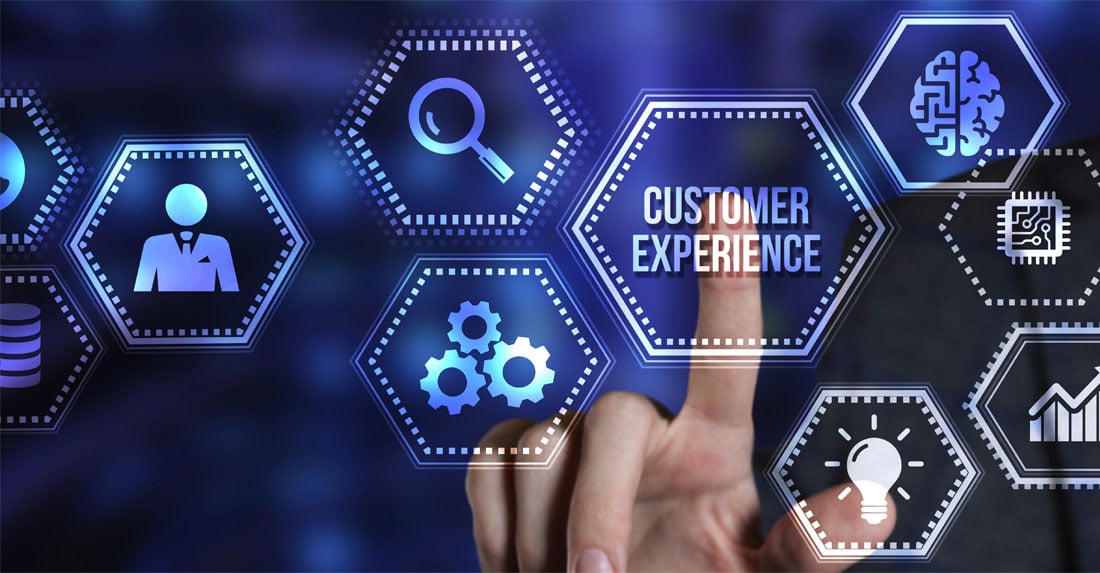
In the tech-driven world, customers’ expectations are changing dramatically. To keep ahead of the competition, organizations must be agile enough to respond ceaselessly across all the channels to these ever-increasing expectations, that are often driven by an individual’s experience in using technology in everyday life.
On the other hand, the entire concept of digitalization is revised, opening doors for new opportunities and better transformations. Especially when the world is rapidly adopting next-generation technologies like Cloud, AR, VR, and Blockchain into their operational practices. There is a constant need to monitor these technologies for security, standardization, compliance, and various other performance benchmarks.
Also, when a customer interacts with a next-generation application, he is not thinking about using a product or service: swiping a smartwatch, wearing VR glasses, or texting with the bot. He is on another side of the spectrum, buying the products and services or getting information. A single blip in his journey—a swipe, a view, or text that fails to yield the expected result—quickly becomes a reason for the customer not to proceed or leave.
Hence, from digital experience to elevating the customer experience (CX), enterprises need to lean into quality assurance and software testing solutions that help with agile development and add value to the business lines. Also, irrespective of customer digital touchpoints the executives presenting these digital and next-generation applications must ensure the same by using AI-driven quality engineering. It is an Agile and DevOps-based approach wherein the QA process is automated to deliver outcomes like testing, continuous integration (CI), and delivery. In short, digital quality engineering services can lead to enhanced CX.
Role of testing in Next-Generation Applications and Customer Experience
Why do we need testing for next-generation applications? Do you think traditional testing is enough to meet the growing customer demands?

Next-generation application testing is a facet of testing the world of connectedness with IoT gadgets, smart wearables, virtual reality, with real-time associations along with testing of the intervened digital ecosystems. By performing testing, we can achieve scalability, flexibility, and tangibility of the digital next initiatives.
But with an increase in the complexities of next-generation applications traditional approaches to delivering updates won't keep you agile. We need a software quality engineering framework that can help us to deliver products and services faster with zero errors. By taking the Agile and DevOps approaches, QE services can help enterprises right from design, build, and test applications, quickly and consistently. In fact, the AI-enabled tools can detect glitches that are preventing the delivery of great CX, nimbly.
Today, C-Suite executives are taking a holistic approach by understanding the need to control or influence much of the customer experience, they are beginning to integrate quality engineering into every stage of the development cycle so that it’s embedded into every line of practice to address various challenges like:
- Speed to market is critical but is slowed down by conventional test automation methods.
- The story isn’t over with releasing the service or product, a small bug or glitch after the release can hamper brand loyalty instantly costing customers.
- The need for toning, rigorous testing with an unfathomable amount of data is painstaking and time-consuming.
- Constantly evolving customer expectations and need to improve customer experience.
Thus, AI-enabled tools are playing a key role in quality engineering services, enabling companies to evaluate large systems with numerous potential errors and flaws rapidly. The end-to-end quality engineering approach enables enterprises to be flexible to face challenges and respond to the ever-changing market needs.
Getting Quality Engineering right for CX
According to Gartner, “By 2025, consumers’ omnichannel buying behavior will drive 60% of B2C brands to move toward functional, rather than a channel-based organization.”
In fact, many brands are already there with more convenient and practical options for customers, such as curbside pickup and returns, or real-time information on store inventory. It is also expected to see more next-gen applications like augmented reality apps to offer more real space and experiential offerings such as exclusive digital sensory experiences.
For a seamless experience, there is a need to execute and verify customer experience testing, a holistic digital quality engineering process should address a range of issues. These include automating the value chain by incorporating CI and CD methodologies. To enhance the customer experience, QE services should consider the following types of testing:
-Sep-15-2021-09-39-41-34-AM.png?width=800&name=MicrosoftTeams-image%20(1)-Sep-15-2021-09-39-41-34-AM.png)
Performance:
In this quality engineering approach, tests are conducted to verify whether the functionalities and features of an application perform to their optimum when subjected to uncertainty. For example, voice-based apps are proving that the interaction between machines and humans is often frictionless. They require continuous performance testing to make sure that the AI components of the voice app are responding and engaging correctly with the user irrespective of uncertain circumstances.
Compatibility:
Compatibility testing supports developing stable solutions for next-gen applications that have a varied range of software and hardware configurations. It validates the seamless run of any application across digital mediums comprising desktops, laptops, smartphones, and tablets. For instance, Innominds has done compatibility testing across various devices, browsers, and operating systems for a VR Gaming Platform and helped them by reducing 80% testing efforts. This enables gamers to download the game across devices without any hiccups.
Check out the case study: VR gaming platform sees 80% reduction in testing efforts; 500+ test scripts developed for test automation pipeline and fault-proof validation and certification.
Usability:
In this type of testing, aspects like task times, human-computer interactions, and error rates are investigated. For example, with an increase in demand for smartwatches and their relative platforms standalone apps there is a need to follow a suit to accommodate the applications within touch target (users’ finger) that is roughly a third to a half of the screen size. Also, there should be a visual consistency across the smartwatch and the related application on a device that it is connected to without affecting the CX.
Accessibility:
For companies to stay ahead of their competitors and capture a higher market share, there should be inclusiveness in offering applications to different users. For example, conversational AI bots require different accessibility features to reach all audiences. It is essential to ensure that the chatbot’s response is according to user needs, navigates across, and offers a voice and tone that fit with the users and with the ongoing conversation to deliver a great user experience.
Security:
Security has emerged as the biggest challenge confronting the digital world today. Unless system glitches and vulnerabilities are handled during the development and testing process, the consequences can be disastrous. This is because as organizations prepare for next-gen digital experiences, hackers are also working on complex attack algorithms, therefore businesses need to adapt continuous quality engineering processes to retain customers.
Organizations can detect and fix flaws or glitches in digital and next-generation applications by implementing enterprise quality engineering before it is delivered to the end customers. It also ensures that there are no glitches after the launch as it helps to design an application with minimal scope for glitches thus saving time, effort, and cost in rework. In the competitive business landscape of today, quality engineering can help enterprises to rationalize the cost of operations, eliminate errors, and deliver superior customer experiences, quickly and consistently.
Customer feedback integrations into product prototypes during the earliest phases, beta testing, and lastly for future upgrades make all the difference in whether a product succeeds or fails. These feedback cycles are used to launch products and features, as well as introducing modifications to features as frequently as possible.
As time passes, test automation and bots are becoming more capable of detecting possible errors. The product adjusts to market changes and becomes more competitive by making advances based on input. The slow progress may cause some engagement to shift to other vendors because the average consumer lacks the patience to wait for an upgrade. Deploying test bots to take over monotonous tasks and jump on the innovation bandwagon, therefore stumping competitors is a terrific alternative.
Companies undergo a digital transformation as part of a constant endeavor to meet client expectations while lowering costs. Changes you make to your business model might have a positive impact on the overall company model.
Innominds' AI-driven QA platform and accelerator, iHarmonyTM, can handle all of your organization's testing needs. Its installation has resulted in up to an 80% decrease in testing costs and a 15% faster release cycle for our clients.




-Sep-24-2021-11-15-22-76-AM.png?width=150&height=150&name=MicrosoftTeams-image%20(13)-Sep-24-2021-11-15-22-76-AM.png)